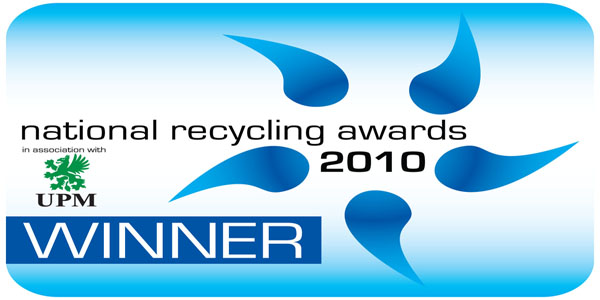Tuesday 24 August 2010
Capt. Charles Moore on the seas of plastic | Video on TED.com
This is an excellent talk about the Great Pacific Garbage Patch, a Pacific island twice the size of Texas, which is made entirely of plastic that has drifted the oceans to rest here in a gigantic swilring mass. If you are curious, take a look on Youtube, which has footage of the Patch. It's unbelievable.
New Member of Staff.
Thursday 19 August 2010
Thursday at Tiny Box House
It has been extremely busy at TBH this week - more happy customers we hope. One of our happy customers brought in some lovely chocolates which, unfortunately, due to their richness and exoticness, made a couple of members of staff feel a little unwell. So,I valiantly ate the remainder to save my colleagues from any further sickness.
As always, feel free to say hi, leave comments and suggestions, or join us on Facebook or Twitter.
Nearly the weekend!
New Member of Staff
Monday 16 August 2010
From Swampy to Sienna – The Changing Face of the Environmentalist.

Remember Swampy? Swampy Hooper first appeared in 1996 as an environmental protester, barricading the machinery sent in to dig out a bypass through the woodlands outside Newbury. The standoff between protester and machine lasted for weeks, with people taking root (no pun intended) in the trees and Swampy digging an underground tunnel, where he stayed throughout the protest. Dreadlocked and donning the big sweaters that were fashionable amongst certain groups in the 1990s, Swampy became the image of environmentalism at that time. As result of his appearance, he and his cohorts were dismissed by many as “crusties” and potheads and the press made much of his middle class upbringing, as if it somehow diminished his authenticity. However, despite the negative reaction by many, Swampy became a celebrity. More than ten years later, not only is Swampy still protesting, albeit more quietly (more recently he appeared at the demonstrations against the third runway at Heathrow), but Swampy still practices what he preaches. According to the Independent, Swampy lives a self-sufficient life in Wales, in a community where there is no electricity or running water. The family, consisting of him, his partner and three children, grow most of their own food, wash in a nearby stream and use an eco-loo.
In my last article, Recycling in the Recession, I addressed the way in which matters concerning the environment are still perceived by many as “middle class” issues. So it is interesting that actually coming forward and challenging the system of power that threatens the environment, or indeed involvement in any kind of demonstration, has long been associated with the working class. Those presenting anything less than “salt of the earth” credentials, as in the case of Swampy, are rejected as fakes. This presents a weird paradox, since on the one hand, a working class background has been essential for the authenticity of the protester but on the other hand, his or her voice has been ignored because of exactly that. Despite their significant role in bringing the growing devastation of the British countryside to the attention of the public, the physical appearance of Swampy and the gang almost certainly weakened their progress in terms of getting their message heard by suit-wearing officials and politicians.
Fast forward a few years. By the mid-noughties the planet’s corner was being fought by a host of celebrities, including Coldplay’s Chris Martin, his wife Gwyneth Paltrow and actress Sienna Miller. Exalting the virtues of composting, recycling and hybrid cars, the endeavour of these celebrities was ostensibly to lead by example. Regularly featured in Coldplay’s music videos was Martin waving his hands, adorned with messages in the form of coloured tape and scribbled symbols, as signs of his commitment to Fair Trade. However, widespread reports of hypocrisy that detailed ecologically unsound activities such as regular long haul flights in private jets, seriously damaged the credibility of both the message and the messenger. Not to mention that Coldplay, in a few short years, went from being the coolest kids on the block to something no self respecting music lover would admit to having on their i-Pod. It could be argued that Martin’s increasing propensity to use his music as a platform for political activism took him down the same route as Bono et al, on a one way trip to uncool.
So in 2010, what are we left with? Horribly contrived photographs of politicians, such as David Cameron, riding bicycles through London, tailed by a legion of support cars? Al Gore? Gore’s authority was seriously degraded some time after the release of his initially well-received film An Inconvenient Truth as a result of leaked emails and sexual allegations, meaning the public once again turned away in disbelief. Or perhaps we place our faith in Lewis Pugh, “The Human Polar Bear”, a Devonshire environmental lawyer who swam 1km (0.62 miles) across 2°C Pumori Lake under the summit of Everest to draw attention to the rapidly melting glaciers. Pugh, who has previously swum in Antarctica and across the North Pole , is something of a hero in both sporting and environmental terms and has so far been praised by the media for his efforts to raise awareness of increasingly visible environmental problems. But perhaps Pugh will only hang onto his integrity until the press can dig some dirt on him. It seems that since way before Swampy’s time, anyone with a message relating to the way we live and the things that we need to change has been condemned by certain segments of the media and had their sincerity challenged. In reality, they have probably made quite a difference in the thinking of the public but at the cost of their own reputation.
Perhaps, though, there is hope in the possibility that environmentalism has, at last, started to bridge the class divide. A heartening article in the Daily Telegraph notes how the battle against Heathrow’s third runway brought together a host of demonstrators, including middle class, aristocracy, politicians and the tweedy upper-middle class. This shows that the face of environmentalism is changing to one that encompasses us all and has the potential to make a difference from terraces and mansions, and living rooms and drawing rooms all over the country. From Swampy to Sienna – we need them all – but most of all, we need all of the people in between.
Friday 6 August 2010
VAT
 A number of customers have enquired as to why we charge VAT on our deliveries. Unfortunately we are charged VAT for the service and if we didn't also charge, we would be breaking the law. We hope that clears things up. Here is a link for your information.
A number of customers have enquired as to why we charge VAT on our deliveries. Unfortunately we are charged VAT for the service and if we didn't also charge, we would be breaking the law. We hope that clears things up. Here is a link for your information.http://customs.hmrc.gov.uk/channelsPortalWebApp/channelsPortalWebApp.portal?_nfpb=true&_pageLabel=pageVAT_ShowContent&id=HMCE_CL_000114&propertyType=document
New Member of Staff.
Tuesday 3 August 2010
Confused? Recycled vs. Recyclable
Well, hang on. It’s cardboard. Of course it’s recyclable. In fact, most things are. Paper, metal, glass, many types of plastic – these things can all be recycled – but if they are not and instead just thrown into landfill as waste, then their recyclable properties are meaningless. Many companies are claiming green credentials by stating that their products are recyclable. An article by Dr. Seetha Coleman-Kammula, founder of Simply Sustain LLC, highlights a target set by coffee giant Starbucks to reduce their environmental burden by making 100% of their cups recyclable by 2012. But, as Dr. Coleman-Kammula points out, well, they are already. However, for materials to be recycled in significant amounts, she argues “that there has to be a whole lot of infrastructure in place to make it all happen in an economically and socially sustainable way”. She goes onto say that the end result of recyclable products actually becoming recycled requires a massive collaborative effort between Starbucks to persuade the consumer to recycle, the consumer and also waste sorters, in areas where waste is actually sorted.
As Rachel discovered, very little packaging is actually recycled, especially in the UK, despite the success of kerbside recycling projects and the significant drop in price of recycled materials during the recession. While we like to know that our packaging is recyclable, especially food packaging, it makes no difference if we don’t drop it into our blue bins. As such, it is somewhat misleading of companies to claim environmental responsibility by providing recyclable packaging that, especially in the case of Starbucks, will probably be chucked in the bin somewhere down the road.
PS If you didn’t guess, that’s how Tiny Box was born.
New Member of Staff
Monday 2 August 2010
How Many Bags for Life?

According to the Guardian, the problem is not, as we might think, getting people to buy bags for life but to actually use them. Apparently, consumers are repeatedly buying these bags and forgetting to take them shopping. We at Tiny Box think that you should keep one at home and one in your car. Or in your bicycle basket.
Only 4 1/2 days until the weekend.
New Member of Staff.



